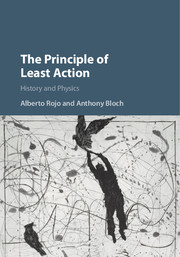The Principia is one of the greatest books of all time. In it Newton formulates a “System of the World,” incorporating his own new mathematical ideas as well as displaying a masterful command of geometry. “Newton was the greatest genius that ever existed,” the mathematician Joseph-Louis Lagrange is alleged to have said, adding, with a grain of humor, “and the most fortunate, for we cannot find more than once a system of the world to establish.”
We include a chapter on Newton's laws of motion and the Principia even though this work is not directly related to variational principles. We do so for two reasons: the monumental importance of his work on mechanics and the fact that his ideas are crucial in the development of the principle of least action. Moreover, Newton himself was a proponent of the Aristotelian simplicity and economy (Lyssy, 2015). In his first rule for the study of Natural Philosophy we read: “As the philosophers say: Nature does nothing in vain, and more causes are in vain when fewer suffice. For nature is simple and does not indulge in the luxury of superfluous causes” (Cohen and Whitman, 1999, p. 794).
Newton's Propositions on the Laws of Motion
Book I of the Principia starts with three axioms, the proverbial Newton's laws of motion. After some definitions, Newton states (Motte, 1729, p. 83):
LAW I
Every body perseveres in its state of rest, or of uniform motion in a right line, unless it is compelled to change that state by forces impressed thereon.
LAW II
The alteration of motion is ever proportional to the motive force impressed; and is made in the direction of the right line in which that force is impressed
LAW III
To every action there is always an opposed and equal reaction: or the mutual actions of two bodies upon each other are always equal, and directed to contrary parts.
In many derivations of the Principia, Newton uses his second law following a method of impulses. The body moves on straight lines that are broken by the actions of impulses acting at regular intervals of time.
